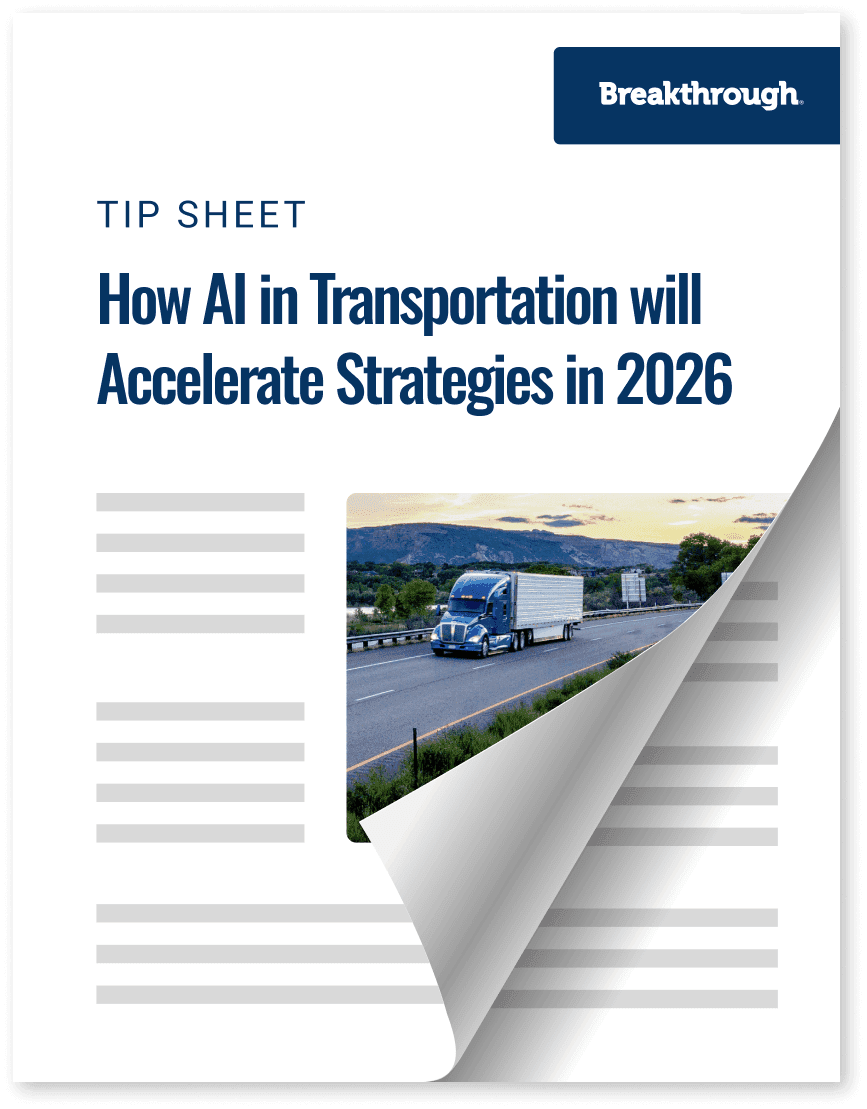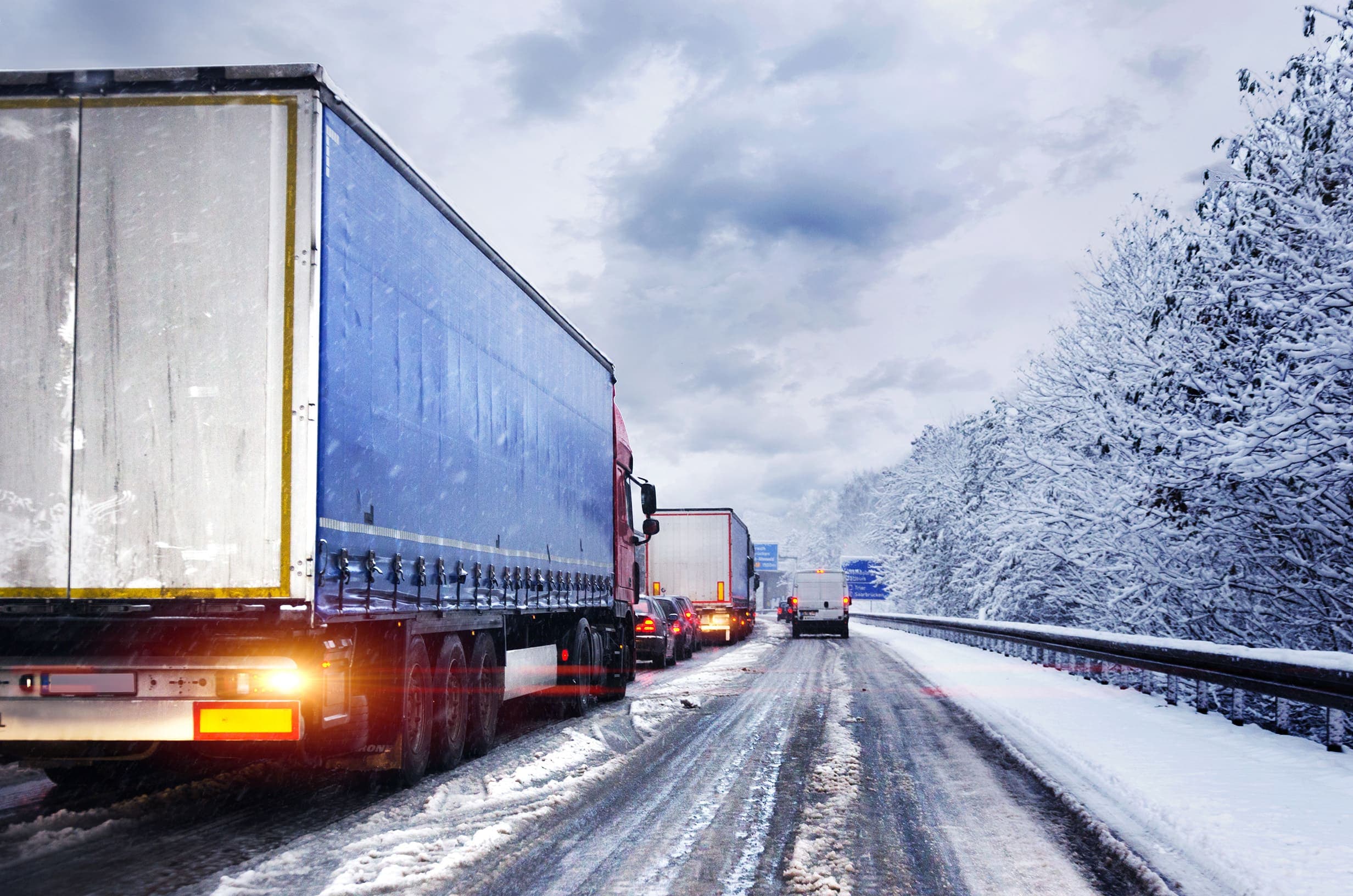How AI in Transportation will Accelerate Strategies in 2026

Trending
Top Posts
Fuel
Why Do Shippers Use The DOE Fuel Surcharge? A History Of The National Fuel Surcharge
5 min read
December 5, 2025
Market Events
How Ukrainian Drone Strikes on Russian Refineries Impact Your Fuel Costs
6 min read
November 20, 2025
Freight
The Definitive Guide on Fuel Management Systems
7 min read
November 11, 2025
10 min read
December 9, 2019

Share:
Table of contents
Browse the table of contents to jump straight to the part you’re looking for
In recent history, sustainability has blossomed into a strategic cornerstone of corporate strategies. The evolution of public perception, advanced technologies, and progressive policies has driven this change.
This puts transportation and its contribution to the global carbon footprint – currently one of the dirtiest emitters by sector – more in the spotlight in recent decades.
As environmental regulatory forces continue to pressure the industry, shippers will have the choice to either help shape policy and adapt to the coming changes or be challenged by the on-costs and regulations of the old ways of doing business.
Though central to many discussions about emissions today, the importance of sustainable transport has not always been the root of the environmental movement. Green regulations first had to determine scope and responsibility for these initiatives before any action could be taken.

Prior to President Richard Nixon’s presidency in the late 1960s, policies surrounding environmental health were minimal. Any attempts at regulating greenhouse gas (GHG) emissions were inconsistent, vague, and failed to collectively work toward a single goal.
During this time, public concerns related to the environmental impacts from consumerism and manufacturing were on the rise – and ultimately sparked a wave of bipartisan support across government entities. As a result, the National Environmental Policy Act was signed. This bill initially formed the Council on Environmental Quality and later evolved into the U.S. Environmental Protection Agency (EPA) as we know it today.
The EPA’s launch set the precedent for progressive legislation targeting industries like power generation, manufacturing, and transportation.

For example, the Clean Air Act of 1970 (amended in 1990) granted the EPA legal authority to prevent air pollution and promote air quality. This Act is also important because it made it possible to pass regulations both federally and at the state level. These included emissions standards for hazardous air quality, requirements for carbon emissions by transportation, and the ability to actually enforce them.

States also began campaigns to independently foster a lower-carbon future. Agencies like the California Air Resources Board (CARB) started to elevate the aggressiveness of national efforts, with other regional government bodies following suit. Keep in mind, all progress made at this time occurred during an era when taking a proactive stance against environmental degradation was largely an afterthought, especially at the corporate level.
As an extension of this new wave of legislation, sustainable transportation measures began to emerge. Low-carbon fuels were introduced in the 2000s through the inauguration of the nationwide Renewable Fuel Standard (RFS). This program imposed a floor for the volume of renewable fuels required to be blended with traditional transportation fuels to ultimately lower transport emissions.
The RFS’ emergence was introduced at a time when people thought crude oil was a fixed resource, and eventually, global supply would run out. The public and many corporate entities panicked about what they thought was the end of crude oil and began to scramble to develop strategies to cope. The RFS tackled these concerns by requiring the incorporation of renewable energy to diversify a predominantly fossil fuel energy portfolio and, in doing so, made transportation fuel cleaner.
These efforts laid a foundation for widespread air quality legislation, which endures today. But with international environmental activism gaining momentum, the focus soon shifted toward transportation greenhouse gas emissions, leaving the fossil fuels reliant transportation industry on the cusp of inevitable change.
What used to be small, grassroots initiatives and lofty goals from businesses have evolved into board-level discussions, sweeping strategic roadmaps, and stringent corporate sustainability efforts that span the full supply chain.

Understanding the importance of the concept of lifecycle emissions brought a greater level of detail and scope to the abatement of carbon dioxide (CO2) emissions. Now organizations have begun to include materials sourcing, supplier selection, newly developed product offerings, and everything in between in their reporting and sustainability goals. This, in itself, helps illustrate the recent shift in corporate sentiment.
By looking at the full system, even more attention has been directed to transportation and its contribution to the U.S.’ carbon footprint. According to the EIA, in 2016 the transportation sector passed power generation as the largest source of carbon dioxide emissions for the first time since 1988. This intensifies the benefits of shaping the future of sustainable transportation because there is much progress yet to be had.

This shift was not necessarily attributed to a significant rise in transportation-related emissions, but rather a result of power generation becoming noticeably cleaner. The decade-long decline of coal power, paired with heightened natural gas utilization and the increasing prevalence of renewables like solar and wind, have naturally removed greenhouse gasses from electricity production.
This raises the question of whether the transformation that occurred in the power sector is now possible for transportation. An analysis of the evolution of public perception, policy, and technology offers even more reason to believe future sustainable transportation ideas will continue filtering through the C-suite.
Nearly half a century since the EPA started to blaze a trail toward environmental improvement from a regulatory perspective, the public has not only aligned with these ideas but avidly intensified them.

From Earth Day’s rapid international expansion since its founding in 1970 to more grassroots efforts to clean-up locally, a clear movement toward sustainability has solidified in the public interest. Citizens are demanding transparency into emissions data and promises from beloved brands to do better.
According to Forbes, Canadian-based financial information company and magazine Corporate Knights released a list of the “Global 100” top-performing companies in areas related to reducing waste, abating carbon emissions, revenues from clean products, and diversity of leadership. It is the first year that “clean revenue” has played such an integral role – indicating that not only are people demanding promises and strategies but actual results and business transformation in the name of sustainability.
Public sentiment is king when it comes to incentivizing corporate sustainability choices.
In an article by Fortune, a study done by New York University’s Center for Sustainable Business analyzed purchase data for tens of thousands of consumer packaged goods (CPG). CPG goods are often used as an indicator of consumer preferences and behavior because they are direct to consumer, frequently purchased items.
Between 2013 and 2018 CPG products made up only 17 percent of all products, but those determined to be “sustainable” based on a host of criteria accounted for 50 percent sales growth. This notable expansion in very specific products related to environmental sustainability is a strong indication of a shift in consumer preferences.
Additionally, the Washington D.C.- based Pew Research Center published a study that measures consumer sentiment about the environment by looking at their desires politically.
Their findings indicate nearly 75 percent of respondents expressed support of the government taking “any reasonable measure necessary to protect the environment.” While views differ by state, generation, and across party lines, stricter environmental regulations have received adequate consumer support to move policies forward at the federal level – and it is fair to believe they will continue to do so.
Through the maturity of existing regulations and the public’s evolving stance on environmental sustainability, the related political landscape has become much more progressive.
As the public continues to trend towards desiring more sustainable goods, so too do their preferences for green policies. Pew research also finds that support for policies that priorities climate change has been on the rise since 2011, with 56 percent of adults swinging that majority in favor.
The persistence of consumer preferences and efforts in state-level legislation has influenced national governments to not only accelerate their imposition of federal mandates but to do so collaboratively. Initiatives that align the objectives of some of the world’s most proactive governments, like the Paris Agreement, Western Climate Initiative, and Low Carbon Fuel Standard cover a wide range of geographical and judicial bases, but they all work under a similar objective.

What theme do we see emerge? All of these projects involve environmental sustainability, and some of the world’s most progressive economies are influencing others to participate. This global convergence has created a common ground of understanding in terms of how different countries tackle one of the world’s most talked-about issues.
Where the public is seeking new solutions, and governments are mandating their use, technology is not far behind. To keep pace with this changing landscape, sustainable transportation technology must continue to anticipate future needs and make them a reality.
Technology for sustainable transportation can manifest in a number of ways from incremental fuel efficiency improvements to fully renovated alternative energy drivetrains.
In one field-tested study, the North American Council for Freight Efficiency hosted its second Run on Less event in October 2019. This event equips a small sample of trucks that naturally operate across ten fleets, a variety of geographies, all carrying different types of freight with the industry’s foremost fuel efficiency technology because higher fuel efficiencies ultimately mean fewer emissions.
For two weeks, their performance was measured as a demonstration of what appropriate driving methodologies and technologies can accomplish. In 2019, the final cumulative average was an 8.1 MPG – on average fuel efficiency is reported and accounted for between a 5.5 – 6 MPG. This illustrates the potential to eliminate tailpipe emissions in the transportation sector.

Additionally, alternative energies like battery-electric options for both passenger cars and commercial use continue to be researched and developed. In a recent interview with Nikola Motor Company, Elizabeth Fretheim their director of business development made it clear that both battery-electric and hydrogen fuel cell electric trucks will be much more imminently commercial than many anticipate. She said, “After transitioning to Nikola and now being a part of driving forward these solutions, my biggest surprise and excitement is in seeing how near term these technologies are.”
The culmination of public advocacy, more progressive policies and advances in technology have set the stage for cross-sectoral environmental change. This faces shippers with a choice: should they be a catalyst for change or should they wait for change to force them into their next strategy?
This is a question likely to penetrate board rooms throughout the U.S. because of the environmental impacts associated with their businesses and supply chains – including transportation.
Staying ahead of the inevitable change curve through targeted solutions and collaborative relationships in all stages of a business’ supply chain will help shippers stay in tune with their corporate sustainability targets. Planning for this shift now better prepares shippers to use this change as an opportunity to be more proactive. If not, they may face the on-costs associated with the legacy practices likely to be outpaced by the push toward global environmental sustainability.

5 min read
December 5, 2025
The DOE fuel surcharge is an outdated, inaccurate method for fuel reimbursement. Learn why it costs you money and discover a modern, market-based alternative.
Read more
6 min read
November 20, 2025
Understand the impact of Ukrainian drone strikes on Russian refineries. Learn why diesel prices are volatile and how to protect your budget from market shocks.
Read more
7 min read
November 11, 2025
Discover how fuel management systems cut costs, track emissions, and improve reimbursement accuracy for modern freight operations.
Read more